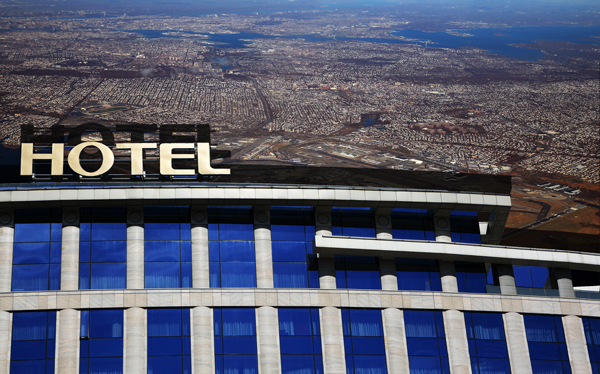When it comes to new hotels arriving in the outer boroughs, Queens is king—specifically Long Island City.
The waterfront neighborhood is the most popular spot by far for new hotels outside of Manhattan, with developers planning 45 projects for the neighborhood dating back to 2010, according to a data analysis by The Real Deal. Its closest competitor, Jamaica, was far behind with 26 projects. Williamsburg and Sunset Park were tied for third at 14 projects each, followed by Flushing with 12.
Long Island City is popular for hotels thanks to a combination of zoning flexibility and close proximity to Manhattan, according to George Xu, founder of the Queens-based real estate firm Century Development Group. He said the neighborhood is currently best suited for budget hotels built by local developers, as the luxury full-service market is still largely concentrated in Manhattan, and that the hotels cater to a mix of business and leisure travelers but skew slightly more toward leisure.
The largest hotel planned for Long Island City, for instance, is a branch of the economy hotel chain Toyoko Inn at 24-09 Jackson Avenue with 1,260 planned rooms. The company has more than 200 branches worldwide in places including Japan, Cambodia and Korea, and it filed plans for its Long Island City location last fall.
Although Toyoko Inn is international, several other hotels planned for Long Island City are from local developers, including a 289-key project at 36-20 Steinway Street from JMH Development and a 198-key project at 38-15 9th Street from Brooklyn North Capital.
Xu is skeptical that Long Island City’s hotel boom will last forever, maintaining that the neighborhood is already becoming oversaturated and that his company is not planning any hotel projects there. He thinks more hotels will eventually start moving to Brooklyn neighborhoods that share Long Island City’s advantage of offering easy access to Manhattan.
“If I had the money and the same lot, I’d put it in Williamsburg,” he said of the possible next wave of hotel projects. “I’d put it in Downtown Brooklyn rather than Long Island City.”
For now, the Long Island City hotel market appears to be in good health. As of October this year, the occupancy rate checked in at 81 percent, according to hotel data and analytics firm STR. This is a slight uptick from 2016 and 2015, when the rates were at 79.4 and 78.2 percent, respectively. The neighborhood’s revenue per available room has gone up steadily every year since 2014, rising from $110.36 a night to $120.30 so far this year.
Occupancy rates and RevPar were both higher in Jamaica, where they rose from 80.1 percent and $110.39 in 2014 to 92.6 percent and $148.33 through October this year.
Xu said the popularity of hotels in Jamaica is primarily due to the neighborhood’s proximity to John F. Kennedy International Airport, which allows developers to better market their projects to travelers.
“People can still call it ‘JFK Hotel,’ ‘Airport Hotel,’” he said, “so that’s why most people are building.”
Overall, 248 hotel projects have been planned for all of the outer boroughs since 2010: 120 in Queens, 90 in Brooklyn, 33 in the Bronx and five on Staten Island. The number of plans increased steadily every year from 2010 to 2014, rising from seven projects with 289 units to 56 projects with 6,742 units. The number then dropped to 36 projects with 3,718 units in 2015 and rose to 40 projects with 4,502 units in 2016. There have been 30 plans filed for new hotels with 2,338 units so far this year.
Jan Freitag, senior vice president at STR, said outer borough hotels were becoming more popular in general as places like Brooklyn and Queens evolved into their own viable destinations.
“In the past, if you built in the outer boroughs, you were thinking that that’s where people went because it was a little cheaper, and they would take a cab or the subway in,” he said, “but as New York is diversifying, and as Brooklyn for example becomes its own demand driver in and of itself, they need hotel rooms.”
